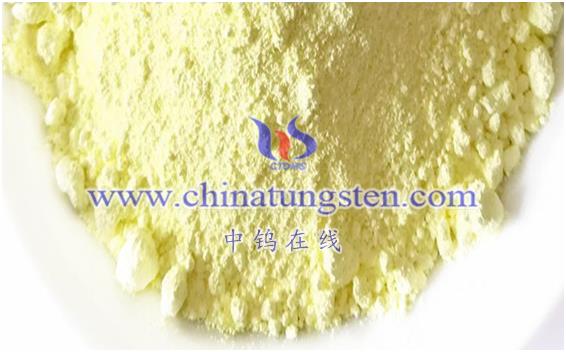The structure and morphology of nano tungsten trioxide can be analyzed by various characterization methods. Some common methods are listed below:

X-ray diffraction (XRD)
XRD can determine the crystal structure and lattice parameters, and obtain the crystal structure information of the sample by measuring the scattering mode of the sample to the incident X-ray.
Transmission Electron Microscopy (TEM)
TEM can provide high-resolution images at the nanometer level, showing the morphology and crystal structure of nano-tungsten trioxide. TEM images can be used to determine the size, shape and distribution of nanoparticles.
Scanning Electron Microscope (SEM)
SEM can also provide high-resolution images showing the surface topography and morphological characteristics of nano-tungsten trioxide. Unlike TEM, SEM uses scattered rather than transmitted electrons.
High Resolution Transmission Electron Microscopy (HRTEM)
HRTEM is an advanced TEM technique that can provide higher resolution images showing the crystal structure, lattice defects and interfacial features of nano-tungsten trioxide.
Fourier Transform Infrared Spectroscopy (FTIR)
FTIR can be used to analyze the chemical composition and crystal structure of nano-tungsten trioxide. By measuring the absorption and emission spectra of a sample in the infrared spectral range, the presence and structure of chemical bonds can be determined.
Ultraviolet Visible Absorption Spectroscopy (UV-Vis)
UV-Vis can measure the absorption characteristics of nano-tungsten trioxide in the ultraviolet-visible spectral range. By analyzing the shape and peak position of the absorption spectrum, the size, morphology and band structure of the nanoparticles can be deduced.
Raman spectroscopy
Raman spectroscopy can provide information about the lattice vibration and molecular structure of nano-tungsten trioxide. By measuring the Raman spectrum scattered by the sample, the vibrational modes of the chemical bonds and the symmetry of the lattice structure can be determined.
The choice of these characterization methods depends on the specific information required and experimental conditions. Often, combining the results of multiple methods provides a more comprehensive understanding of the structure and morphology of nano-tungsten trioxide.
More details of tungsten oxide product, please visit website: tungsten-oxide.com
Please contact CHINATUNGSTEN for inquiry and order of tungsten oxide:
Email: sales@chinatungsten.com
Tel.: 86 592 5129595






